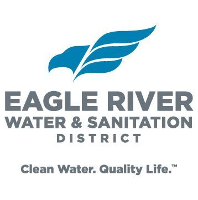How geothermal could enhance US energy security—if prioritized – Atlantic Council

Report on Geothermal Energy’s Role in Advancing Sustainable Development Goals in the United States
Introduction: Meeting Rising Energy Demand with Sustainable Solutions
A projected increase in United States electricity demand, estimated at 2.4 percent in 2025 and 2.6 percent in 2026, presents a significant challenge to energy affordability and stability. Traditional energy markets exhibit volatility, while common renewable sources face issues of intermittency and supply chain vulnerability. In this context, geothermal energy emerges as a critical component for a sustainable energy strategy, directly supporting the achievement of multiple Sustainable Development Goals (SDGs).
Contribution to SDG 7: Affordable and Clean Energy
Geothermal energy provides a direct pathway to ensuring access to affordable, reliable, sustainable, and modern energy for all. By tapping the Earth’s internal heat, it offers a consistent power source that strengthens the energy grid and promotes energy independence.
- Reliable Baseload Power: Unlike intermittent renewables, geothermal provides 24/7 power, which is essential for grid stability and achieving a fully decarbonized energy system in line with SDG 7.
- Insulation from Market Volatility: Geothermal generation requires no fuel, thereby insulating consumers and industry from the price fluctuations of global oil and gas markets.
- Increasing Affordability: Policy support, such as the Inflation Reduction Act’s tax credits, is projected to reduce the levelized cost of electricity from Enhanced Geothermal Systems (EGS) by nearly 85 percent, making it cost-competitive with other energy sources.
Fostering SDG 9: Industry, Innovation, and Resilient Infrastructure
The advancement of geothermal energy is intrinsically linked to building resilient infrastructure, promoting inclusive and sustainable industrialization, and fostering innovation. Technological progress is expanding the geographic viability of geothermal power, creating new opportunities for industrial and economic growth.
- Technological Innovation: Advances in Enhanced Geothermal Systems (EGS) and the adaptation of drilling techniques from the oil and gas sector are key innovations driving the industry forward.
- Resilient Infrastructure: Geothermal power is being utilized to provide uninterrupted energy to critical infrastructure, including the fast-growing data center industry powering artificial intelligence and US military bases, enhancing national energy security.
- Research and Development: Continued federal support for R&D initiatives, such as the Frontier Observatory for Research in Geothermal Energy (FORGE), is vital for overcoming technical hurdles, reducing costs, and scaling the technology nationwide.
Promoting SDG 12: Responsible Consumption and Production
Geothermal energy promotes sustainable consumption and production patterns by minimizing reliance on critical minerals with vulnerable and concentrated supply chains, thereby reducing environmental and geopolitical risks.
- Reduced Mineral Dependency: Compared to solar, wind, and battery storage systems, geothermal power requires significantly fewer critical minerals like cobalt, lithium, copper, and rare earths. This mitigates exposure to supply chains largely controlled by a single nation.
- Leveraging Domestic Assets: The ability to utilize existing assets, technologies, and workforce skills from the US oil and gas sector for drilling operations further reduces supply chain risks and supports a just transition.
- Circular Economy Potential: Geothermal development offers the opportunity to become a net producer of critical minerals. Projects are underway to extract lithium from geothermal brine, aligning with circular economy principles and creating a domestic supply of a vital resource for the energy transition.
Policy Frameworks and Partnerships for the Goals (SDG 17)
Achieving the full potential of geothermal energy requires strong partnerships between government, industry, and research institutions. Renewed US government interest has highlighted key policy areas for cooperation to accelerate development.
-
Permitting Reform: Streamlining regulatory processes is essential to reduce project timelines and attract investment.
- Expand Categorical Exclusions (CXs) for low-impact, early-stage exploration activities.
- Establish a single, unified environmental review process through improved interagency cooperation.
- Ensure adequate staffing at federal and state agencies to process permits efficiently.
-
Sustained Financial and R&D Support: Consistent policy and financial mechanisms are crucial for long-term growth.
- Maintain tax credits that make geothermal projects financially competitive.
- Continue federal R&D support to advance drilling and reservoir engineering techniques, reducing costs and risks associated with EGS.
Conclusion: A Strategic Path to Sustainable Energy Security
By prioritizing the development of geothermal energy, the United States can build a unique path toward energy security that is insulated from global commodity markets and vulnerable supply chains. This strategy directly supports key Sustainable Development Goals by delivering reliable, clean, and affordable power, fostering innovation, and promoting responsible production, thereby ensuring a more sustainable and resilient energy future.
1. SDGs Addressed in the Article
-
SDG 7: Affordable and Clean Energy
The article’s primary focus is on promoting geothermal energy as a reliable, affordable, and clean source to meet rising electricity demand in the United States. It emphasizes geothermal’s ability to provide “round-the-clock baseload power” and become cost-competitive, directly aligning with the goal of ensuring access to sustainable energy for all.
-
SDG 9: Industry, Innovation, and Infrastructure
The text highlights technological innovation, such as Enhanced Geothermal Systems (EGS) and advanced drilling techniques borrowed from the oil and gas sector. It also discusses the development of resilient energy infrastructure to power critical industries like “data center industry” and “AI operations,” which supports the goal of building resilient infrastructure and fostering innovation.
-
SDG 12: Responsible Consumption and Production
The article addresses sustainable resource management by comparing geothermal’s lower reliance on critical minerals like cobalt and lithium to other renewables like solar and wind. It notes that geothermal “uses less of other critical minerals” and points out the vulnerability of supply chains dominated by China. Furthermore, it mentions the potential for geothermal projects to become a “net producer of critical minerals” like lithium, promoting a circular economy and efficient use of natural resources.
-
SDG 13: Climate Action
By advocating for the expansion of geothermal energy—a renewable source with no fuel requirement—the article implicitly supports climate action. Geothermal power is presented as a low-carbon alternative to volatile “oil and gas markets” and a key component in pathways to “net-zero emissions,” which is essential for combating climate change.
-
SDG 8: Decent Work and Economic Growth
The article connects the development of geothermal energy to economic benefits, such as stopping “the rise of our electricity prices” and supporting the growth of key sectors like “AI, manufacturing, reshoring.” By leveraging the assets and technologies of the US oil and gas sector, it also implies a transition of skills and resources that can foster sustainable economic growth.
2. Specific Targets Identified
-
SDG 7: Affordable and Clean Energy
- Target 7.1: Ensure universal access to affordable, reliable and modern energy services. The article directly addresses this by highlighting the challenge of meeting rising electricity demand “affordably” and positioning geothermal as a solution that can provide “reliable power 24/7.”
- Target 7.2: Increase substantially the share of renewable energy in the global energy mix. The entire article is a call to “accelerating the development of geothermal energy,” a renewable source, to increase its contribution to the US energy portfolio.
- Target 7.a: Enhance international cooperation to facilitate access to clean energy research and technology… and promote investment in energy infrastructure and clean energy technology. The article calls for “Continued tax credits and research and development (R&D) support” and highlights the role of the DOE’s Geothermal Technologies Office in advancing technology, which are measures to promote investment and R&D in clean energy.
-
SDG 9: Industry, Innovation, and Infrastructure
- Target 9.1: Develop quality, reliable, sustainable and resilient infrastructure. Geothermal energy is presented as a source for resilient infrastructure, offering “energy resilience necessary to achieve US energy policy priorities” due to its ability to provide baseload power without fuel and with less exposure to supply chain disruptions.
- Target 9.5: Enhance scientific research, upgrade the technological capabilities of industrial sectors… encouraging innovation. The article emphasizes the need for sustained federal support for R&D at facilities like the “Frontier Observatory for Research in Geothermal Energy (FORGE) demonstration laboratory” to overcome technological challenges and “catalyze advances.”
-
SDG 12: Responsible Consumption and Production
- Target 12.2: Achieve the sustainable management and efficient use of natural resources. The article discusses this by detailing how geothermal “relies relatively less on critical minerals like cobalt and lithium” compared to solar and wind. It also points to projects in the “Salton Sea” that show how geothermal could become a “net producer of critical minerals,” representing highly efficient resource use.
3. Indicators for Measuring Progress
-
Levelized Cost of Electricity (LCOE)
The article provides a specific, measurable indicator of affordability. It states that with IRA tax credits, “the levelized cost of electricity from EGS to drop by nearly 85 percent, to $60 to $70 per megawatt-hour,” making it competitive. This figure can be used to track progress towards Target 7.1.
-
Installed Renewable Energy Capacity
Progress towards Target 7.2 is implied through specific examples of new capacity. The article mentions offtake agreements signed by tech companies, such as “Meta’s agreements for 150 megawatts (MW) each” and “Google’s agreements… for 115 MW,” which serve as concrete indicators of an increasing share of geothermal energy.
-
Policy and Regulatory Reform Timelines
The article suggests that the efficiency of the permitting process is a key indicator. It notes that the “January 2025 CX alone could shorten the geothermal permitting process by up to a year.” Tracking the adoption of such reforms and their impact on project timelines serves as a measure of progress in creating a supportive policy environment (Target 7.a).
-
Investment in Research and Development (R&D)
The level of “Sustained federal support for testbeds like FORGE” is an implied indicator for measuring progress on innovation (Target 9.5). Continued or increased funding for the DOE’s Geothermal Technologies Office would signal a commitment to advancing the sector.
-
Material Footprint and Supply Chain Diversification
The article implies that a reduction in the use of specific critical minerals (chromium, cobalt, lithium, rare earths) is a key indicator of responsible consumption (Target 12.2). Progress can be measured by comparing the mineral intensity of new geothermal projects against that of wind and solar projects, and by tracking the reduction in reliance on supply chains where China has a dominant market share (e.g., “China refines 91 percent of rare earths”).
4. Summary Table of SDGs, Targets, and Indicators
| SDGs | Targets | Indicators |
|---|---|---|
| SDG 7: Affordable and Clean Energy |
7.1: Ensure access to affordable, reliable, modern energy.
7.2: Increase the share of renewable energy. 7.a: Promote access to research, technology, and investment in clean energy. |
Levelized Cost of Electricity (LCOE) dropping to $60-$70 per megawatt-hour.
New installed capacity from specific projects (e.g., Meta’s 150 MW, Google’s 115 MW). Reduction in permitting process time (e.g., by up to a year due to CXs). |
| SDG 9: Industry, Innovation, and Infrastructure |
9.1: Develop quality, reliable, sustainable and resilient infrastructure.
9.5: Enhance scientific research and upgrade technological capabilities. |
Provision of 24/7 baseload power, enhancing energy resilience.
Sustained federal R&D support for institutions like the FORGE laboratory. |
| SDG 12: Responsible Consumption and Production | 12.2: Achieve sustainable management and efficient use of natural resources. |
Reduced use of critical minerals (cobalt, lithium, rare earths) compared to wind and solar.
Development of lithium extraction from geothermal brine. |
| SDG 13: Climate Action | 13.2: Integrate climate change measures into national policies and planning. |
Integration of geothermal into the US energy security strategy.
Implementation of policies like tax credits and permitting reform for clean energy. |
| SDG 8: Decent Work and Economic Growth | 8.2: Achieve higher levels of economic productivity through technological upgrading and innovation. |
Support for high-growth industries like AI and manufacturing through reliable power.
Leveraging existing assets and skills from the oil and gas sector. |
Source: atlanticcouncil.org
What is Your Reaction?
 Like
0
Like
0
 Dislike
0
Dislike
0
 Love
0
Love
0
 Funny
0
Funny
0
 Angry
0
Angry
0
 Sad
0
Sad
0
 Wow
0
Wow
0




















































.jpg.webp?itok=0ZsAnae9#)

























